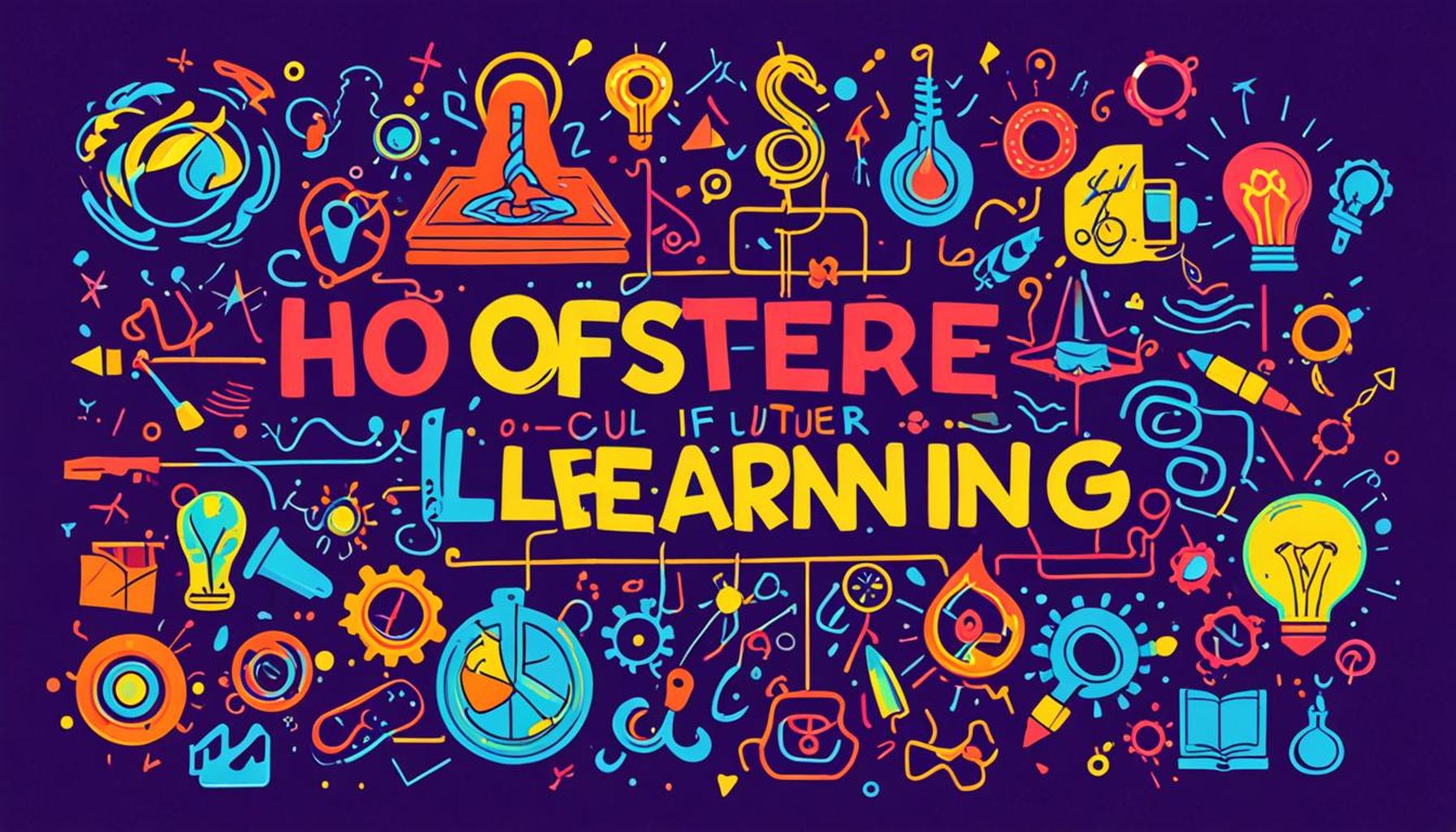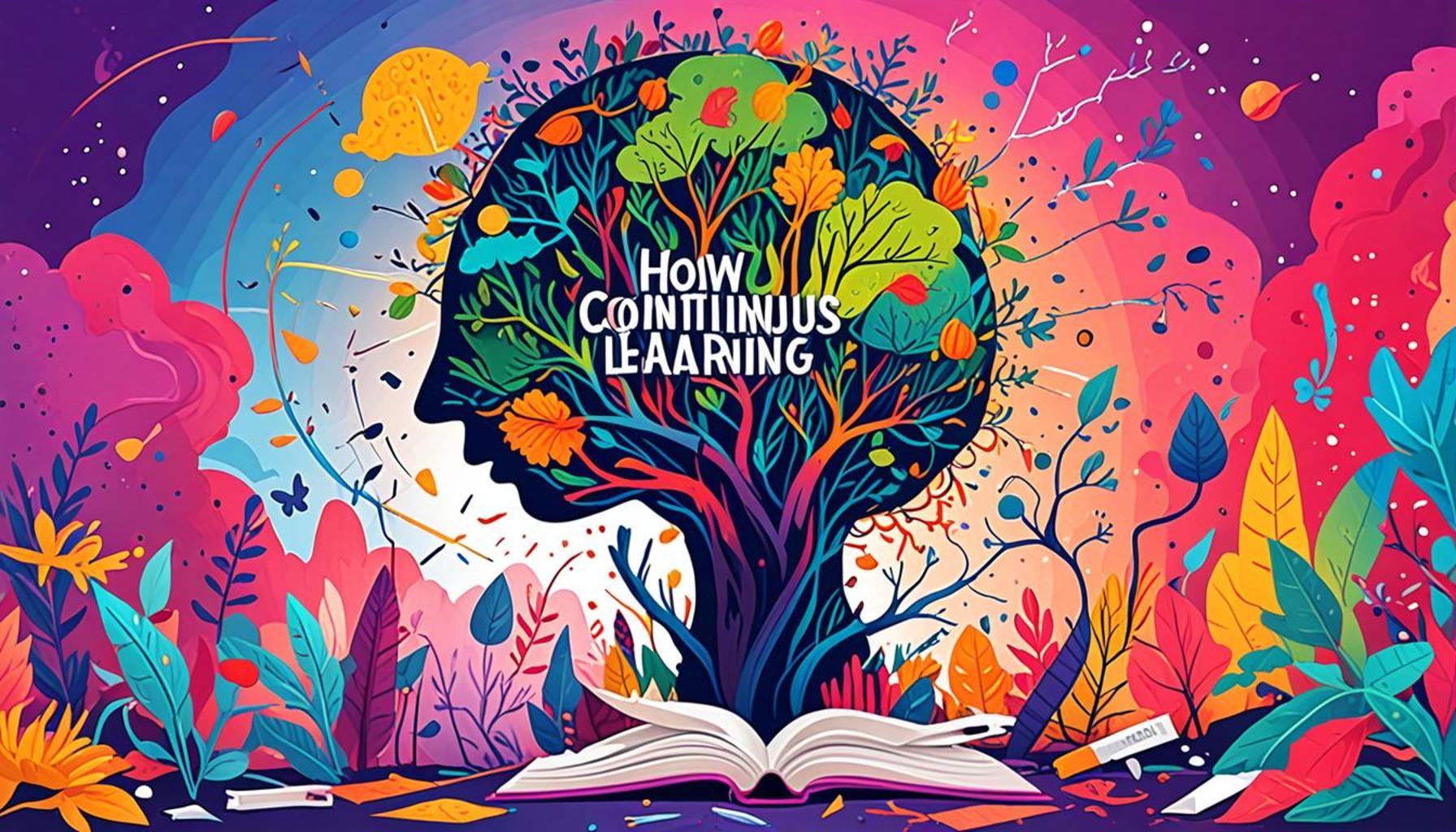How to Cultivate a Culture of Continuous Learning in Organizations: Challenges and Opportunities

The Importance of a Learning Culture in Business
In today’s fast-paced business landscape, cultivating a culture of continuous learning has become a critical factor for organizational success. As companies strive to remain competitive, they face numerous challenges in embracing this dynamic approach to growth. The landscape is not just shifting; it is evolving at a breathtaking pace, especially in regions like Nigeria where economic shifts, technological advances, and a youthful workforce create a unique environment for adaptability.
To successfully establish a learning culture, companies must navigate several key challenges. One major hurdle is:
- Changing Mindsets: Fostering a learning culture requires shifting employee perspectives towards lifelong education. Employees often come from traditional backgrounds where continuous education may not have been emphasized. Initiatives like mentorship programs or storytelling sessions featuring employees who have succeeded through continual learning can motivate others to embrace this mindset.
- Resource Allocation: Organizations must invest in tools and resources that facilitate learning, such as online courses, workshops, or access to industry-specific seminars. In Nigeria, where internet connectivity can be inconsistent, investing in offline resources like books, interactive workshops, and community learning centers has proven effective.
- Engaging Leadership: Leaders should model learning behaviors to inspire teams and create a safe environment for questioning and exploration. Leadership development programs aimed at enhancing emotional intelligence and communication skills can empower leaders to effectively champion the learning culture.
Despite these challenges, the opportunities presented by a culture of continuous learning are immense:
- Innovation: Companies open to learning often cultivate innovative solutions and processes. For instance, startups in Lagos have flourished by constantly iterating their products based on customer feedback and employee input, showcasing the importance of listening and adapting.
- Employee Retention: A commitment to employee development reduces turnover, as team members feel invested in. Organizations that offer training and several growth pathways typically see much lower attrition rates. In many Nigerian companies, employees are more likely to stay if they perceive opportunities for personal and professional growth.
- Adaptability: Organizations that prioritize learning are better equipped to adapt to market changes and emerging trends. Companies that utilize real-time data for decision-making have a competitive edge, especially in volatile markets. For instance, embracing agile methodologies allows teams to respond swiftly to challenges, setting a precedent for continuous learning practices.
Ultimately, for enterprises in Nigeria, understanding the challenges and opportunities of continuous learning is vital. As the job market evolves with the rapid advancements in technology and global business practices, organizations must recognize the value of adaptive learning. By investing in a culture where knowledge thrives, companies can create an empowered workforce that not only meets challenges head-on but also propels the organization into future success.
YOU MAY ALSO LIKE: Read read another article
Understanding the Challenges of Fostering a Learning Culture
To effectively cultivate a culture of continuous learning within organizations, it is crucial to first understand the myriad of challenges that leaders and employees may encounter. These challenges can often pose significant barriers to achieving a vibrant and sustainable learning environment. Here, we delve deeper into the complexities that organizations might face and propose actionable strategies to overcome them.
1. Resistance to Change
One of the foremost challenges in fostering a learning culture is the inherent resistance to change. Employees may exhibit skepticism or reluctance towards new learning initiatives, especially in environments where traditional hierarchies dominate. A common practice among successful organizations is to enact change slowly, introducing learning initiatives in stages. This gradual approach allows employees to familiarize themselves with the changes and gradually shifts their attitudes toward continuous learning.
2. Lack of Engagement
Engaging employees in learning opportunities can prove difficult. Many team members may simply view training sessions as obligatory rather than valuable. To combat this, organizations must prioritize making learning enjoyable and relevant. This can be achieved by integrating gamification into training programs, thus fostering friendly competition. Additionally, local success stories of employees who have benefitted from learning can inspire others to participate actively in personal development.
3. Availability of Resources
In some cases, organizations struggle with making resources available for continuous learning. This is especially true in Nigeria, where access to technology can be limited and internet connectivity inconsistent. To address this challenge, businesses can consider hybrid training models that combine online learning with in-person workshops, utilizing community resources such as educational institutions or local libraries. Providing group-oriented learning activities can also leverage the collective knowledge within teams, leading to a more inclusive learning experience.
4. Identifying Learning Opportunities
Another significant hurdle is effectively identifying relevant learning opportunities. With the fast-paced evolution of industries, organizations may find it challenging to keep up with necessary skills required in the market. A proactive approach includes conducting regular skill gap analyses and encouraging teams to contribute to learning plans based on the unique challenges they face. Pairing employees with mentors can also provide personalized guidance, enhancing ongoing learning initiatives.
5. Measuring Learning Impact
Once learning initiatives are implemented, organizations must find ways to measure their impact. Effective metrics such as employee performance indicators, employee engagement surveys, and retention rates can provide valuable insights. Regular feedback sessions and evaluations can help gauge the effectiveness of learning programs, allowing organizations to refine their strategies continuously.
Navigating these challenges can seem daunting, but organizations willing to embrace a culture of continuous learning are laying the groundwork for sustained success. By addressing these obstacles head-on, companies can unlock valuable opportunities that will not only foster employee growth but also catalyze organizational innovation.
Explore Innovative Strategies for Continuous Learning
Creating a culture of continuous learning within an organization extends beyond traditional training sessions; it embraces innovative strategies that foster deeper engagement and knowledge sharing among employees. One significant challenge organizations face is overcoming resistance to change. Many employees may feel threatened by the introduction of new systems that require them to learn new skills, which is why it’s essential to create an environment that emphasizes learning as a valuable opportunity rather than a burden.Encouraging collaboration among employees is one effective approach. Implementing mentorship programs can help bridge knowledge gaps while boosting confidence in less experienced staff. Organizations should also consider utilizing technology to provide accessible learning tools. For instance, online platforms that offer on-demand training modules allow employees to learn at their own pace, increasing their ownership of the learning process.Another key opportunity lies in integrating learning into daily workflows. This can be achieved through short, frequent training sessions or “lunch and learn” events that allow employees to share expertise in informal settings. Not only does this promote a culture of continuous improvement, but it also cultivates networking opportunities.Organizations should regularly evaluate learning outcomes to ensure that the strategies implemented are yielding beneficial results. Feedback mechanisms facilitate an understanding of what works and what needs to be improved, making it possible to tailor learning experiences effectively. By addressing these challenges proactively, companies can transform organizational culture and position themselves at the forefront of industry innovation.
| Advantages | Impact on Learning Culture |
|---|---|
| Enhanced Collaboration | Fosters synergy through shared knowledge. |
| Increased Engagement | Employees feel valued and invested in their growth. |
By prioritizing these approaches, organizations not only confront challenges effectively but also seize opportunities to nurture a sustainable culture of continuous learning, essential for adaptability and success in today’s rapidly changing environment.
CHECK OUT: Click here to explore more
Leveraging Opportunities for Continuous Learning in Organizations
While the challenges to cultivating a culture of continuous learning can seem overwhelming, they are frequently accompanied by substantial opportunities that organizations can harness. By adeptly navigating these challenges, companies can create an environment that not only promotes individual growth but also drives collective success. Here, we explore various opportunities that can be leveraged to foster continuous learning.
1. Embracing Digital Tools
The advent of digital technologies has revolutionized access to learning materials. Organizations in Nigeria can utilize platforms like Zoom and Microsoft Teams to host virtual workshops, allowing employees to learn from industry experts without geographical limitations. E-learning platforms such as Coursera or LinkedIn Learning can provide tailored courses that align with both company goals and employee aspirations. This flexibility in learning allows employees to engage with content at their own pace, bridging the gap between traditional training and modern learning preferences.
2. Encouraging Knowledge Sharing
In fostering a vibrant learning culture, creating a system for knowledge sharing is critical. Organizations can set up internal forums, workshops, and lunch-and-learn sessions, encouraging employees to share their expertise and insights. For instance, a marketing team could present successful strategies they’ve implemented, providing practical examples for their peers. This not only empowers employees to learn from each other but also strengthens team collaboration and boosts morale across departments.
3. Integrating Learning into Daily Routines
Another valuable opportunity lies in embedding learning into daily workflows. By encouraging managers to integrate brief learning check-ins or skill refreshers into regular meetings, companies can normalize the continuous learning process. Organizations can also leverage software that supports micro-learning—short, on-the-job learning experiences that fit seamlessly into an employee’s daily routine. This method can have a profound impact on knowledge retention and application because learning doesn’t need to be confined to formal classroom settings.
4. Creating a Safe Learning Environment
A key aspect of a successful learning culture is fostering a safe environment where employees feel comfortable experimenting and making mistakes. Leaders must promote the idea that failure is a part of the learning process. Companies like Dangote Group have implemented feedback mechanisms and recognition systems that celebrate risk-taking and experimentation, encouraging their workforce to pursue innovative solutions without the fear of reprisal. This culture of psychological safety enhances creativity and curiosity, essential components of continuous learning.
5. Building Strong Leadership Support
Leadership plays a pivotal role in cultivating a culture of learning. When leaders actively participate in training and professional development, it sends a strong message across the organization. In Nigeria, prominent organizations that prioritize leadership involvement often have higher employee engagement levels. By allocating time and resources for their own learning journeys, leaders demonstrate their commitment to growth, which can inspire a ripple effect throughout the company, encouraging employees to follow suit as they witness firsthand the value of continuous development.
Recognizing and effectively harnessing these opportunities is instrumental in establishing a culture of continuous learning. As organizations in Nigeria strive to become competitive in the global market, leveraging these strategies can significantly enhance their adaptability, innovation, and ultimately, their success. By investing in a learning-oriented workforce, companies can build resilience and maintain relevance in an ever-evolving economic landscape.
SEE ALSO: Click here to read another article
Conclusion: Navigating the Path to Continuous Learning
In concluding our exploration of how to cultivate a culture of continuous learning in organizations, it is evident that while the challenges may seem formidable, the opportunities they present are invaluable. By embracing technological advancements, fostering knowledge sharing, and integrating learning into daily routines, organizations in Nigeria can unlock the potential for innovation and adaptability. Moreover, by creating a safe environment that encourages risk-taking and experimentation, employees can thrive creatively and collaboratively.
Leadership plays an essential role in this transformation. When leaders actively participate in their own learning journeys, they not only set a precedent but also inspire a culture of growth throughout the workforce. As Nigerian organizations seek to position themselves competitively on the global stage, the commitment to a continuous learning ethos will be integral to achieving sustainable success.
By recognizing the profound link between employee development and organizational resilience, companies can strategically invest in their greatest asset—their workforce. Encouraging a culture of lifelong learning ensures that teams are not just reacting to changes in the market but are also poised to drive innovation forward.
In a rapidly evolving landscape, those organizations that take proactive steps towards fostering a culture of continuous learning will not only maintain relevance but will also lead the charge in a dynamic future. Embracing this journey will undoubtedly yield substantial rewards as they navigate the complexities of the modern business environment.


